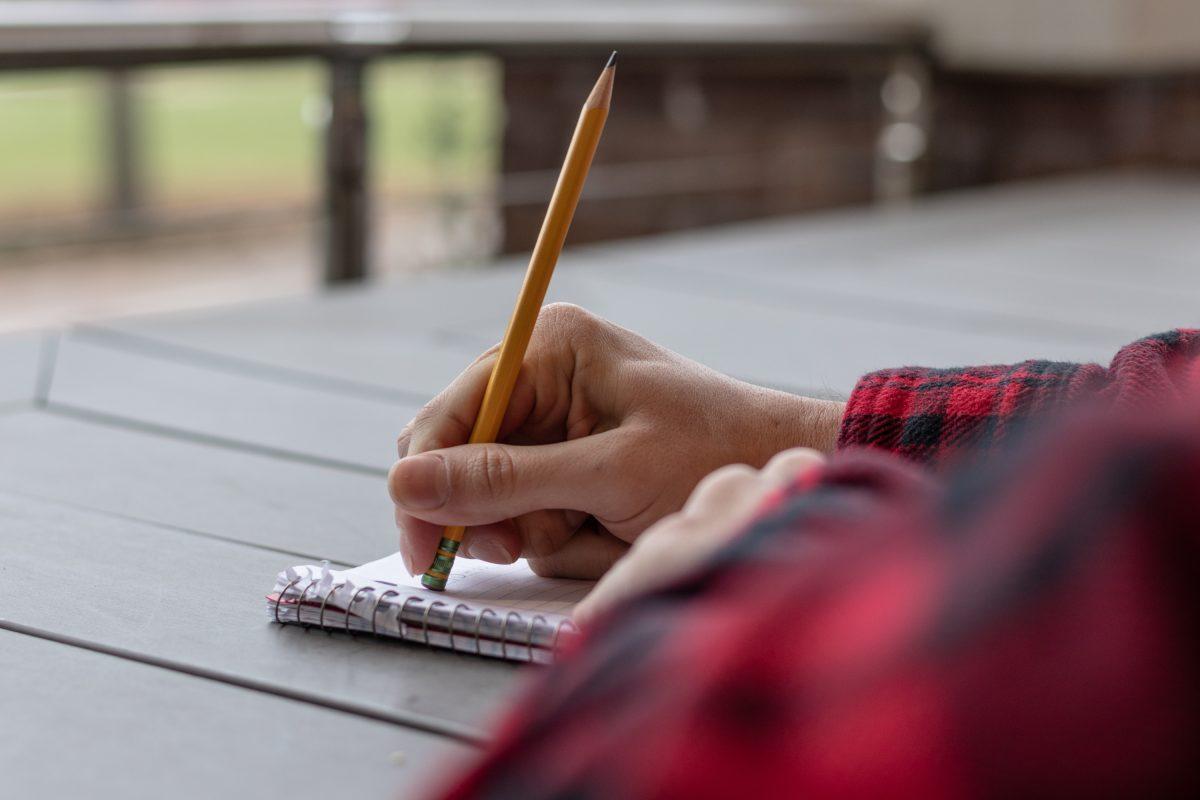With the spring semester beginning, students everywhere are dusting off their writing utensils to begin serious note-taking anew. Maybe you scarcely touched a pen over the winter break, much less wrote extensively by hand. Even as more and more students opt to take notes electronically, rather than on paper, there is a particular burning question in the mind of anyone who cares about stationery: what writing tool should you use? While there is a dizzying array of options available, from elegant fountain pens to five cent disposable ballpoints, one of the simplest— the wooden pencil— remains a firm favorite, despite being little more than lead encased by two pieces of wood.
Its simplicity is its greatest strength. The pencil is far more versatile than any other writing tool and is perfect for uses where ballpoints or other pens would be decidedly useless. The pencil is one of the most familiar school-related items in existence: usually yellow, cheap and with a short-lived pink eraser. These tools dominate elementary and middle schools. Even earlier, children learn to write using extra-chunky, wide pencils to accommodate undeveloped fine motor skills, and every art class has a drawer, or three, of drawing pencils, some with chew marks (ew). Pencils are ubiquitous for a reason: they always work, their marks are erasable and buying them in bulk will not break the bank.
At the heart of a pencil is a lead, which is not actually made of lead, but rather a mixture of clay and graphite. The term “lead” comes from the Middle Ages, when artists would sometimes use styluses of lead to leave faint, silver marks on parchment or vellum, much like how one would use a modern pencil. According to Webmineral Mineralogy Database, graphite is the principal component of the lead which is a crystalline allotrope of carbon that leaves dark marks on textured surfaces. By itself, graphite is too crumbly and smudgy to be an ideal writing tool. According to the Contè website, the modern pencil was invented by Nicholas-Jacques Contè in 1795 when he mixed clay with graphite and sandwiched it between two wooden slats, thus creating the best writing utensil. The amount of clay added determines the hardness of a lead; today, you can buy a range of hardnesses, from 9B, which is ultra-dark and smudgy, to 9H, which is extremely hard and leaves faint lines on paper.
Pencils are completely non-mechanical objects. As long as you have a sharpener, either a dedicated one for pencils or just a knife, you are good to go. Pens can run out of ink, and mechanical pencils can jam. The marks made by a pencil are streaks of carbon: they cannot be washed off. Inks are a mix of pigments in a solvent, and thus are readily soluble. “Permanent” markers, for instance, are soluble in alcohol. Suppose that you need to label some sample tubes in the lab. If any alcohol gets on the tubes or your gloves, your labels could all be washed off.
Most inks are also subject to degradation when exposed to ultraviolet radiation. Try writing something in permanent marker and leaving it in the sun for several months for guaranteed illegibility. Not so with pencil marks! They remain in place unless deliberately erased and are immune to chemical changes. Like silly putty pressed to newspaper, rubber erasers have a higher affinity for the pencil writing than the writing surface does, so with a few rubs, the otherwise-permanent trail of carbon comes off. Many erasers are also mildly abrasive, gently sanding off the topmost layer of paper fibers to completely remove the pencil marks. Erasability is perhaps the biggest advantage of pencils over pens: whether you are doing math, writing an essay or bubbling in a Scantron, making changes to your work is easy.
Now suppose you need to do some sketching in space. Most pens rely on Earth’s gravity to disperse their ink and can fail to function in a microgravity environment like that of a space station. To circumvent this problem, both NASA astronauts and Russian cosmonauts were issued pencils as late as 1965, as Ciara Curtin writes in Scientific American. Smearing a stick of carbon onto a page requires nothing from gravity. Although NASA would later invent a pen with a pressurized ink cartridge, the pencil solved the writing problem while using far less taxpayers’ money. And should you ever need to write underwater on your underwater paper… well, you know which writing instrument to pick.
Whether you are an artist, scientist or casual notetaker, one writing tool is unmatched for its cost-efficiency, versatility and go-anywhere-do-anything character: the old-fashioned wooden pencil.
The wooden pencil is the most useful, versatile writing utensil
Adam Sullivan | The Reflector
Adam Deeb erases notes in his notebook with a classic non-mechanical pencil.





















































































